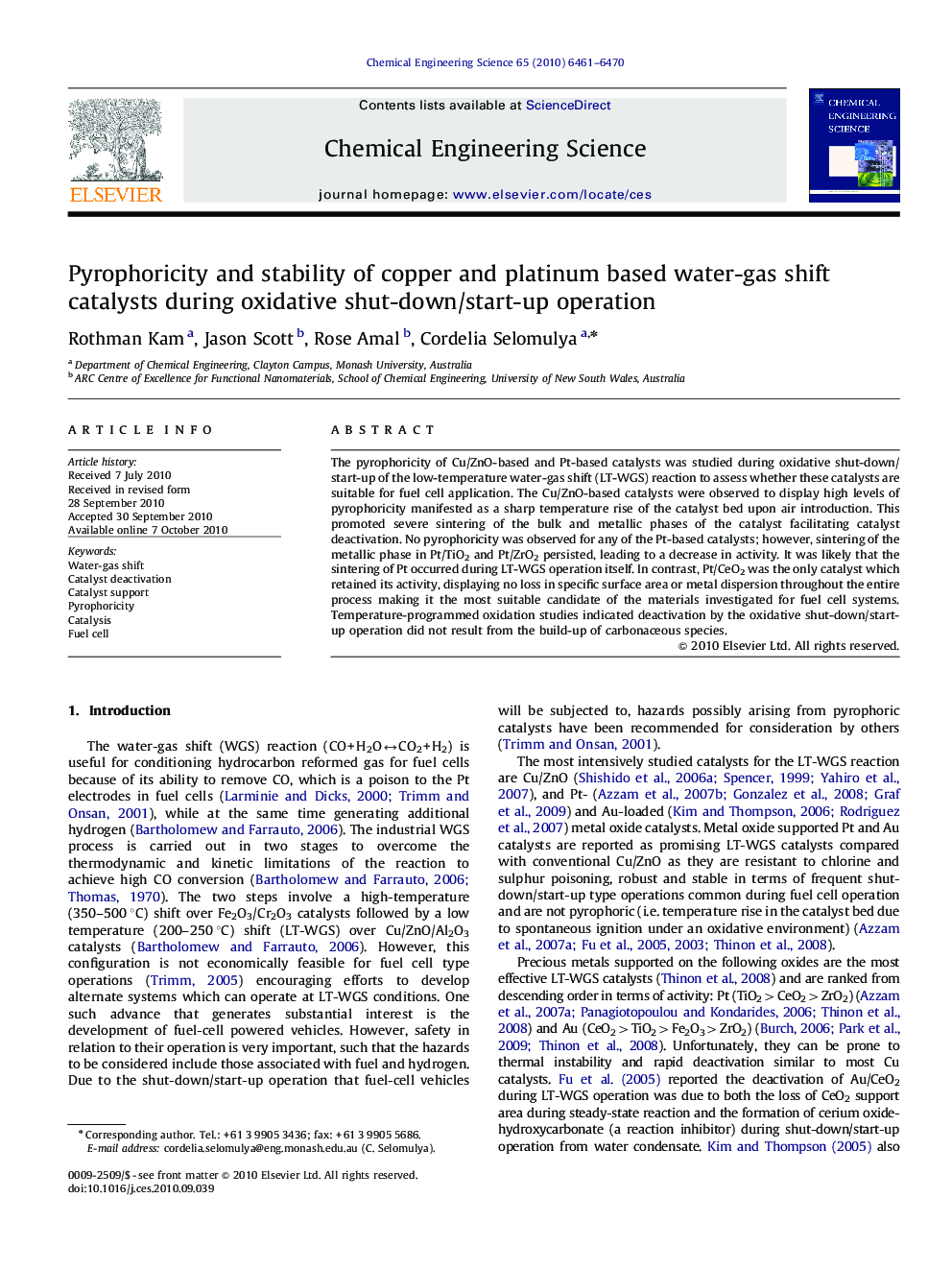| Article ID | Journal | Published Year | Pages | File Type |
|---|---|---|---|---|
| 156978 | Chemical Engineering Science | 2010 | 10 Pages |
The pyrophoricity of Cu/ZnO-based and Pt-based catalysts was studied during oxidative shut-down/start-up of the low-temperature water-gas shift (LT-WGS) reaction to assess whether these catalysts are suitable for fuel cell application. The Cu/ZnO-based catalysts were observed to display high levels of pyrophoricity manifested as a sharp temperature rise of the catalyst bed upon air introduction. This promoted severe sintering of the bulk and metallic phases of the catalyst facilitating catalyst deactivation. No pyrophoricity was observed for any of the Pt-based catalysts; however, sintering of the metallic phase in Pt/TiO2 and Pt/ZrO2 persisted, leading to a decrease in activity. It was likely that the sintering of Pt occurred during LT-WGS operation itself. In contrast, Pt/CeO2 was the only catalyst which retained its activity, displaying no loss in specific surface area or metal dispersion throughout the entire process making it the most suitable candidate of the materials investigated for fuel cell systems. Temperature-programmed oxidation studies indicated deactivation by the oxidative shut-down/start-up operation did not result from the build-up of carbonaceous species.
